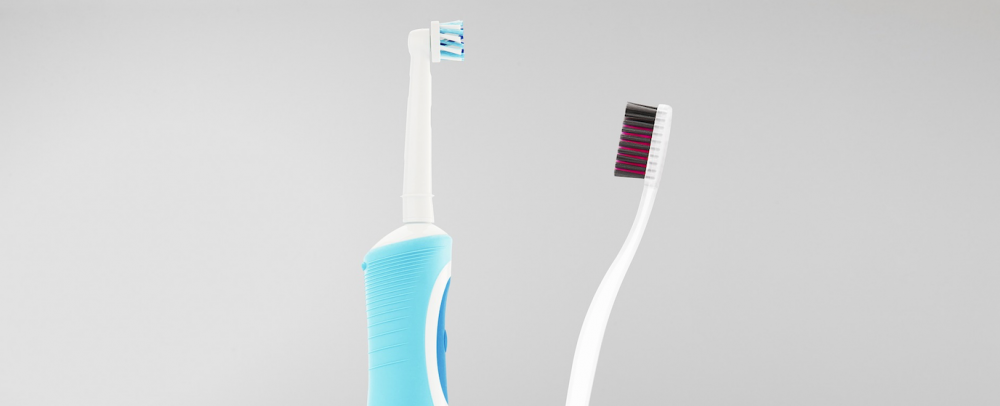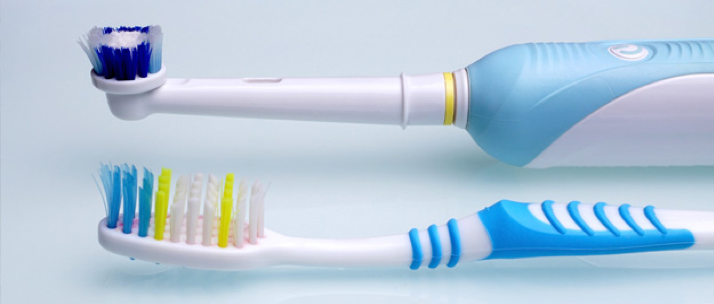Electric vs Manual Toothbrushes: what’s the evidence?
Posted on 2nd November 2018 by Carlo Frassetto

A 2014 Cochrane Review published in the Cochrane Database of Systematic Reviews compared the effects of using a manual toothbrush with an electric toothbrush for maintaining oral health. Why is this important for dental, nursing and medical students to be aware of?
In our day to day oral care, most of the time we may make decisions based on our background, culture and education. But are these choices right?
To answer a question like: ‘which is better, brushing your teeth with an electric or manual toothbrush?’ we need to consider the evidence. This is particularly important because electric toothbrushes are widely advertised, recommended by professionals and can be expensive compared to manual toothbrushes.
What is an electric (or ‘powered’) toothbrush?
Electric (or ‘powered’) toothbrushes can be classified into two categories based on their action: vibration or rotation-oscillation. Vibration supports a technique similar to the manual one whereas the rotating-oscillating version focuses on moving the brush slowly from tooth to tooth. Another classification can be made on the speed of their movements as standard power toothbrushes, sonic toothbrushes (20 Hz to 20,000 Hz) or ultrasonic toothbrushes.

Oral health
The Cochrane Review evaluated the effects of brushing with a manual vs. powered toothbrush on two main outcomes: plaque (a sticky film containing bacteria) and gingivitis (gum inflammation). The review also explored whether there were any adverse effects of brushing with an electric vs. manual toothbrush.
Dental plaque is the primary cause of gingivitis and can lead to periodontitis, a more serious form of gum disease, affecting 11% of the global population. The build up of plaque can also lead to caries (decay) in permanent teeth. Tooth decay is the most prevalent disease worldwide, with a global prevalence of 35% for all ages combined. Whilst in high‐income countries the prevalence of caries has decreased over the past decade, in lower‐ and middle‐income countries (LMICs) the incidence is increasing due to population growth, an ageing population, changing diets and inadequate exposure to fluorides.
So, removing plaque and reducing gingivitis have important roles in preventing gum disease and tooth decay and are of major public health importance.
Evidence
This Cochrane Review included 56 trials with 5068 participants. Fifty one of these trials, including 4624 participants, provided data for the meta-analysis. Participants were randomized to receive either a powered toothbrush or a manual toothbrush. Only five trials were at low risk of bias, five were at high risk of bias and 46 were at unclear risk of bias.
There is moderate quality evidence that powered toothbrushes provide a statistically significant benefit compared with manual toothbrushes in the reduction of plaque. There was an 11% reduction in plaque at one to three months of use, and a 21% reduction when assessed after three months of use.

With regard to the reduction of gingivitis, there is moderate quality evidence that powered toothbrushes again provide a statistically significant benefit compared with manual toothbrushes. There was a 6% reduction in gingivitis at one to three months of use and an 11% reduction when assessed after three months of use.
There did not appear to be a difference in the number of adverse effects between using an electric vs. a manual toothbrush. This may be because very few adverse effects were reported in the included studies.
The number of trials for each type of powered toothbrush varied: side to side (10 trials), counter oscillation (five trials), rotation oscillation (27 trials), circular (two trials), ultrasonic (seven trials), ionic (four trials) and unknown (five trials). The greatest body of evidence was for rotation oscillation brushes which demonstrated a statistically significant reduction in plaque and gingivitis at both time points.
Implications
What has this systematic review taught us?
It is worth highlighting that the differences found between manual and powered toothbrushes were of statistical significance. We can say that there is moderate evidence that powered toothbrushes are statistically significantly more effective at reducing plaque and gingivitis than manual toothbrushing in the short term. However, the clinical importance of these findings remains unclear.
Statistical significance tells us how likely an effect is a chance finding based on the researcher’s predetermined significance level. Many factors impact statistical power. For example, very small differences between the groups being compared can be found to be statistically significant if you have a very large sample. Research findings may not be important enough to fundamentally change a prescribing practice or treatment choice, even if found to be statistically significant.
Clinical significance tells us how effective or meaningful the research finding might be to patients. It is important to remember that the determination of clinical significance can be a more subjective decision. It will depend on, among other things, which disease process or condition is being studied and how many people are affected by the condition.
One key reason why we can’t be sure of the clinical importance of the findings of this review is because the long-term benefits for dental health are unclear. Few of the included studies reported data over more than three months. So, these findings appear promising for electric vs. manual toothbrushes. Nonetheless, further longer-term trials are needed to assess whether these benefits lead to a reduction in important, longer-term outcomes such as caries and gum disease.
References
Yaacob M, Worthington HV, Deacon SA, Deery C, Walmsley AD, Robinson PG, Glenny AM. Powered versus manual toothbrushing for oral health. Cochrane Database of Systematic Reviews 2014, Issue 6. Art. No.: CD002281. DOI: 10.1002/14651858.CD002281.pub3.
Farina R, Tomasi C, Trombelli L. The bleeding site: a multi‐level analysis of associated factors. Journal of Clinical Periodontology 2013;40(8):735‐42. DOI: 10.1111/jcpe.12118.
Marcenes W, Kassebaum NJ, Bernabé E, Flaxman A, Naghavi M, Lopez A, et al. Global burden of oral conditions in 1990‐2010: a systematic analysis. Journal of Dental Research 2013;92(7):592-7. doi:10.1177/0022034513490168




No Comments on Electric vs Manual Toothbrushes: what’s the evidence?
Do you mind if I quote a few of your posts as long as I provide credit and sources back
9th June 2019 at 9:09 amto your webpage? My blog is in the exact same niche as yours and my visitors would genuinely benefit from a lot of the information you provide here.
Please let me know if this okay with you. Thank you!
Dear Carmen. Our blogs are published under the Creative Commons Licence so any text that is re-created would have to be done in full, with no amendments. However, you can of course reference the blog, providing a link to the original content. Best wishes, Emma.
17th June 2019 at 11:09 am